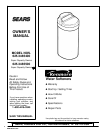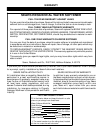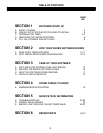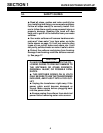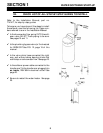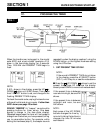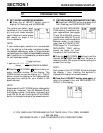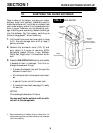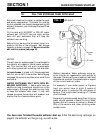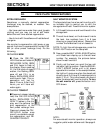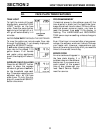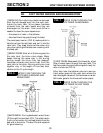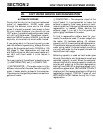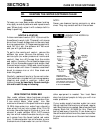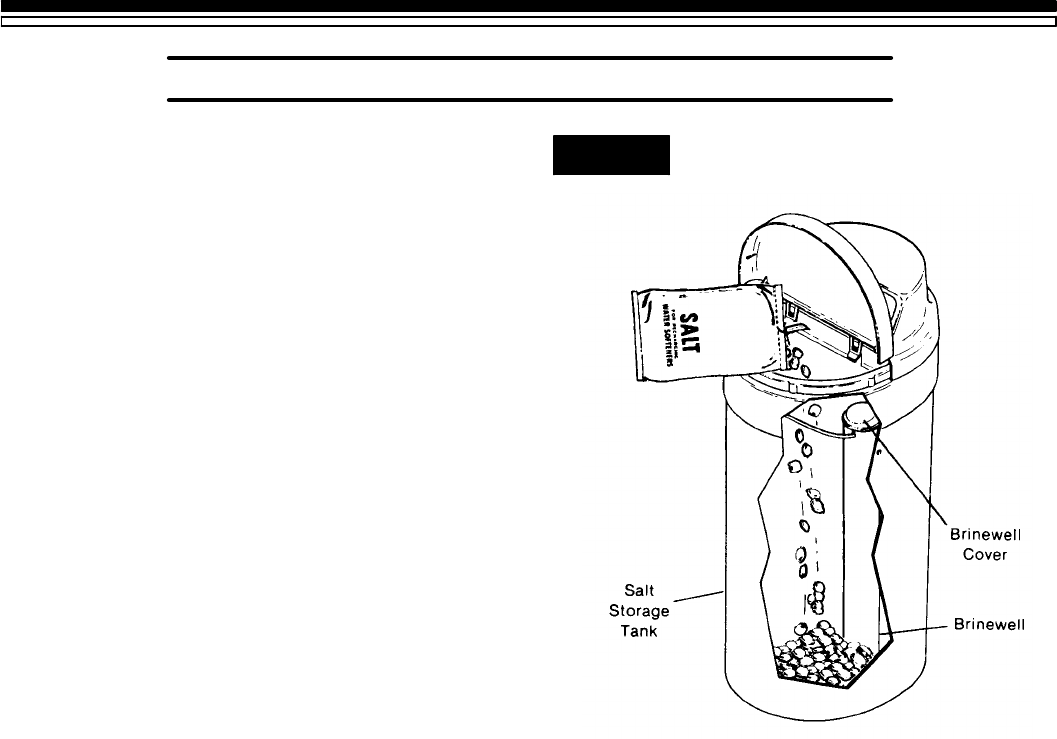
WATER SOFTENER START-UP
SECTION 1
9
1E. FILL THE STORAGE TANK WITH SALT
Brine (salt dissolved in water) is needed for each
and every regeneration. The water for making
brine is metered into the salt storage tank by the
softener. However, you must keep the tank filled
with salt.
Fill the tank with NUGGET or PELLET water
softener salt. DO NOT use rock salts, as they
have dirt and sediments that will stop the
softener from working.
Before filling, be sure the brinewell cover is in
place on the top of the brinewell. Salt storage
capacity is shown on page 19. Be sure to set the
salt monitor system (see page 10).
NOTES:
The salt monitor system page 10, is calibrated to
the density of nugget or pellet water softener
salt. The monitor will not work as accurately
with other types of salt including rock and solar.
In humid areas, it is best to fill the storage tank
half-full, and to refill it more often. Salt bridging
(see page 15) occurs more often when conditions
are humid.
WATER SOFTENING SALT WITH IRON RE-
MOVING ADDITIVES — Some salts have an
additive to help the softener handle iron in the
water supply. Although this additive may help
to keep the softener resin clean, it may also
release corrosive fumes that will weaken and
shorten the life of some softener parts.
FIG. 3 ADD SALT
Sodium information: Water softeners using so-
dium chloride for regeneration add sodium to
the water. Persons who are on sodium restricted
diets should consider the added sodium as part
of their overall sodium intake.
For example, if your water supply is 15 grains
hard, you would have to drink 3 quarts of
softened water to consume 335 milligrams of
sodium. That is equivalent to eating 2-1/2 slices
of white bread.
Persons who are concerned about their drinking
water should consider a Sears Drinking Water
System that will remove or reduce in excess of
90% of the sodium and other drinking water
contaminants.
You have now finished the water softener start up. After the sanitizing recharge, on
page 8, the softener will be giving you soft water.



